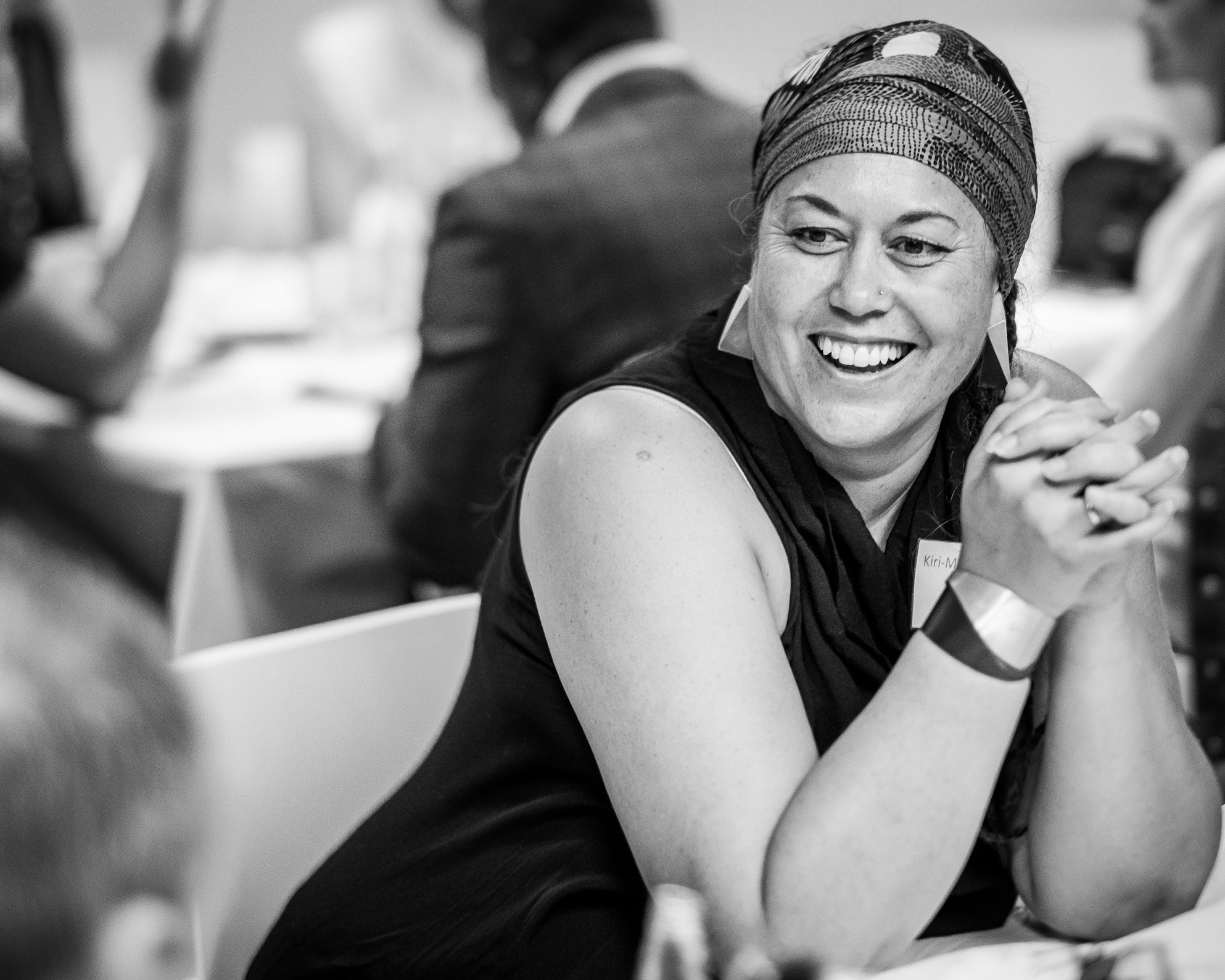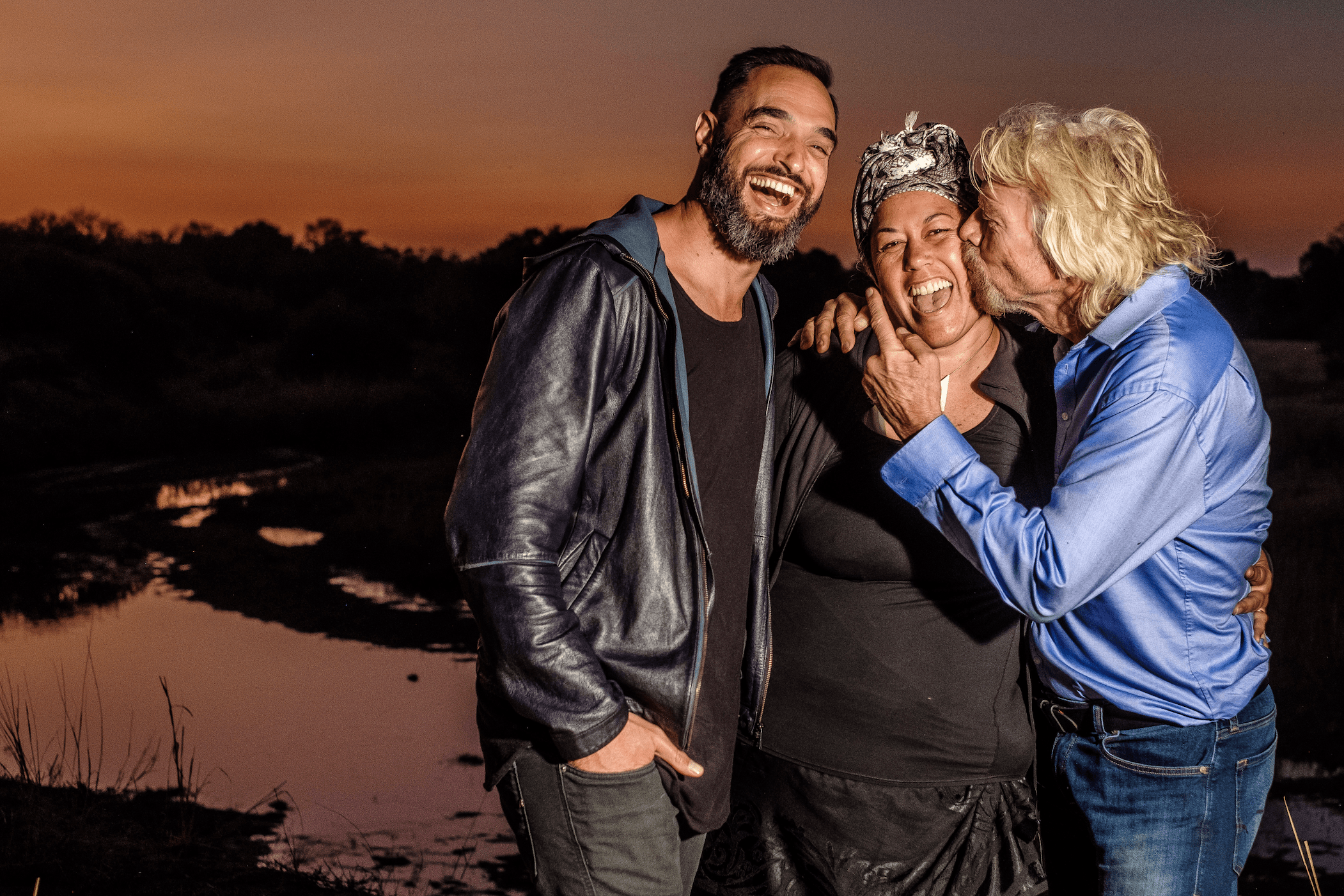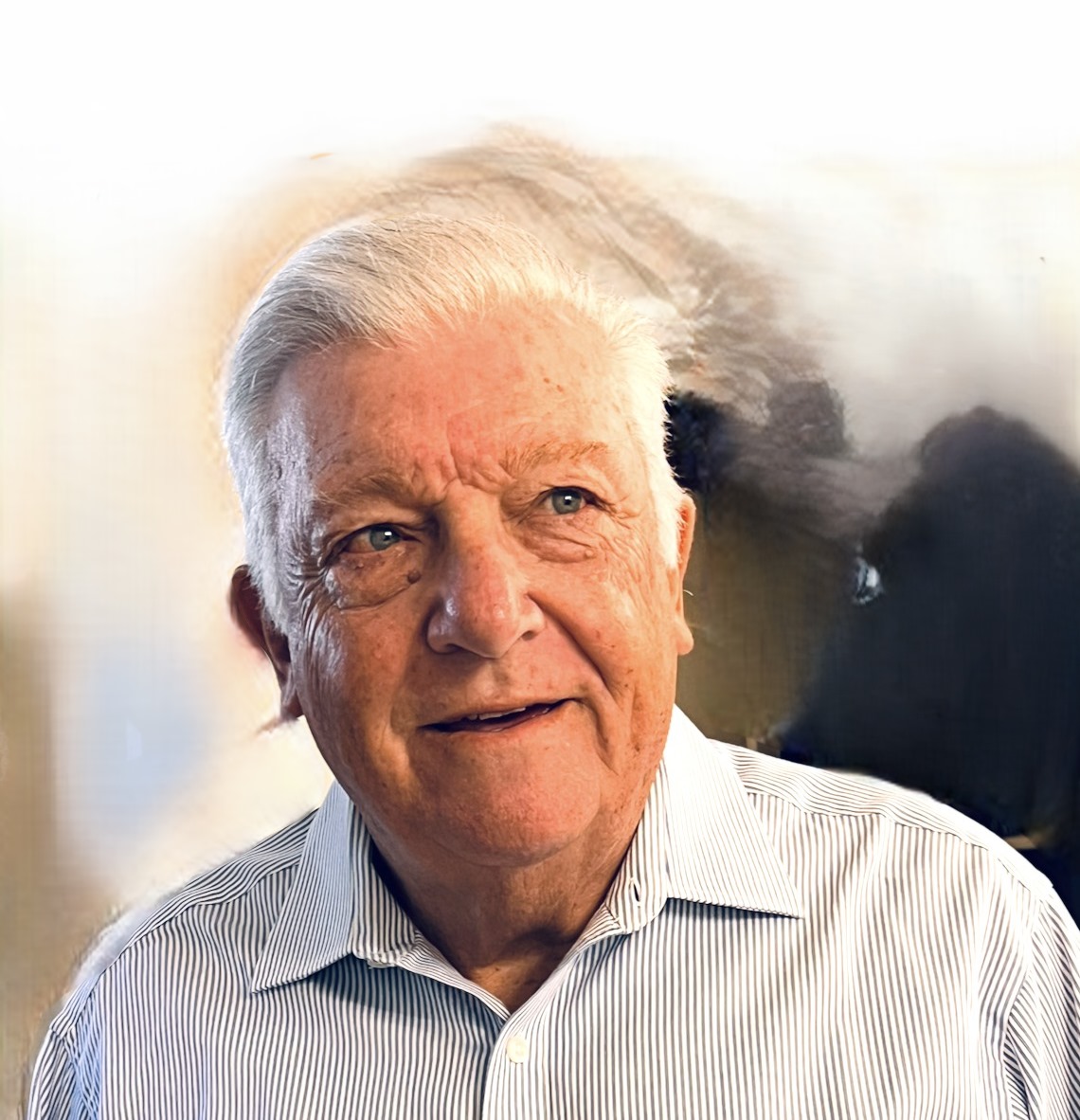Lifestyle
The One Percent Movement Founder: 6 Questions We Need To Ask Ourselves To Keep Creating Impact

How do we measure success? Often, the most successful technological, scientific and artistic innovations are measured based on the number of people they’re able to impact. The ability to scale is what we call it in business terms.
Now turns to the question of how we can create scale throughout all our lives?
It’s not as complicated as one may think. When people think about making an impact, they think of influencers championing obscure and large projects. As ambitious as someone may be, it’s not hard to feel small when you’re looking at the world through a comparative lens. The truth is, the only way you’re ever going to start making an impact is if you make the conscious decision to start now. Not only so, but dedicating your life to making small movements of shifting the dial forward by 1%. All it takes in retrospect is becoming better by 1% every day, to achieve a growth of 37% by the end of the year, according to James Clear, author of Atomic Habits.
Impact starts with our individual growth. If we’re committed to owning our decisions in a way that benefits humanity at large, then we are making an impact that will add value. You might not be able to assess your impact on the world based on immediate, tangible results, but the impact goes beyond what you can see on the surface. Think of the brightest legends in the world, Shakespeare, Picasso, Einstein…etc. The commonality they share is that they’ve all acquired fame at the same time—when they died.
Their contribution wasn’t for fame but it’s the micromovements they produced in their lifetimes that translated into a big cultural shift for later generations.
This is exactly the type of momentum Kiri-Maree Moore, CEO, and founder of Decision Velocity Global wants every person to move towards. “Leaving a legacy where these footprints will add value to those who follow,” she says. Kiri-Maree Moore is a speaker, advisor, investor, and serial entrepreneur who founded Decision Velocity Global and the One Percent Movement to give a platform to leaders around the world.
She shares the six questions we have to start asking ourselves if we want to create an impact.
Am I adding value?
As simple as physics, every action we take bears a consequence. We can choose to turn in to our calling or turn away from it. For example, if we feel limited by our circumstances we can choose to improve ourselves through education. But if we choose to focus on our limitations, we will always remain stagnant.
No matter how small it appears to be, any amount of progress gives you a bigger leap of confidence to proceed to the next step. “Every time you’re making a decision, you’re either adding value to humanity or taking it away, so ask yourself this: Am I adding value?” Kiri-Maree says.
She believes that a cultural shift will begin when everyone recognizes their ability to contribute, even in the smallest forms. If everyone participates, then the dial will start to move forward.
What are the patterns that are going to be the most effective?
We’re trained from a young age to have a fixed mindset on many things. However, this deviates us from being curious and finding other pathways that can result in more effective success. For example, many entrepreneurs have reengineered their thought patterns to find solutions to problems that no one else had.
“It’s hard to disrupt the pattern to what you know,” Kiri-Maree says. “It’s how you’ve always done it, and you don’t know what you don’t know but when you do there needs to be ownership.” In order for change to occur, we need to disrupt patterns. It’s not about going against the status quo, rather it’s about finding a different way to do things that allow us to narrow the gap between problem and solution.
Do I want to be the same tomorrow as I am today?
It can be overwhelming thinking about how we can “become” this person we want to be overnight, or even within a couple of months. Setting goals for personal growth is important, but measuring ourselves based on how we haven’t met the final outcome is counterproductive. It diminishes our confidence and motivation. Instead, we should focus on setting micro-goals every day. How can I be better than I was yesterday? This could simply be learning one new thing every day.
Growth is incremental and as Kiri-Maree puts it, “Growth is what it means for you. All I care about is if you’re shifting the dial forward. Everyone is called to play at a different level.”
Everyone can make the conscious decision to shift the dial forward, but it requires a degree of effort and awareness in our daily life.
If I wasn’t band-aiding, what could I be doing?

As humans, we’re drawn to instant gratification. We prefer to avoid pain and reap the rewards. However, growth can have a direct correlation with the uncomfortable.
Most people rely on band-aids, or quick-fix solutions to ease the discomfort they’re going through. Ask yourself this: Instead of deflecting or covering up the problem you’re facing, how can I identify patterns that lead to this issue, and try to rewire those patterns to produce a different outcome?
Every outcome is a consequence of patterns. If we have a sleep deprivation problem, it could be we’ve developed patterns from staying up late, thus impacting our overall ability to make meaningful contributions throughout the day. The result might be more irritation towards our family and colleagues, and producing lower quality work, but we tend to use coffee or stronger stimulants as a temporary, band-aid solution. But what people don’t realize is the use of short-term fixes decreases the chance of us actually rewiring our patterns to the results we want. A true solution to our sleep issue is to ditch the coffee and rewire our sleeping patterns. This same analogy can be applied to different problems we’re trying to overcome.
How do I prepare for the worst?
Our reaction to things has a large impact on our resilience. If we want a greater impact but we lack resilience, it’s hard for us to follow through on required actions when there are obstacles. Thus, preparation and having the tools to deal with hardship is quintessential for entrepreneurs.
Kiri-Maree suggests having strategies readily to develop tools that can help you navigate the challenges when faced with the uncomfortable. She’s a big believer in building human intelligence (HI).
When we work on building the muscle of human intelligence, we disrupt old patterns and engage with curiosity in a new approach. Drawing data in the form of insights, experience, and results, using this to disrupt patterns to strategically take action coming to an effective and sustainable outcome. Through this process, any data added is to make better decisions, thus, building the muscle of HI. Knowledge of patterns helps us to make decisions that are resilient enough to deal with the worst-case scenario, it makes the everyday hurdles appear diminished.
How can I learn from others?
A great way we can make an impact is by opening ourselves to perspectives where we learn from the wisdom of others. There is a source of endless curiosity for the individual willing to ask better questions, engage with anyone and know how to access the vast amount of knowledge out there in the world.
The point is, you don’t have to be friends with a Nobel prize winner or Oprah Winfrey to become wiser. In fact, just through connection with other humans, you can learn to see perspectives that you didn’t see before. This is accelerated when we’re able to master our human intelligence.
As demonstrated by Kiri-Maree, she brought strangers on a regular basis to her show The Decision Table to interview. “I wanted to role model I could bring anyone on to The Decision Table and know both my guest and I can always learn something from each other. And it is as simple as a conversation,” she says. If we stopped viewing the world as a competitive place, and choose to collaborate with different distinctions at the table, then we might actually move forward.
“ Create space to learn from others that are willing to continue to evolve,” Kiri-Maree says. “The greater capacity you have to learn to be flexible at doing this as an individual who is a part of the collective, the better chance you have at gaining a seat at the table.”
Conclusion
The process to become an effective leader is not this grandiose scheme for the future. It starts with everyday people, who choose to make everyday decisions a priority. The concept of shifting the dial forward by 1% is a proactive way we can get people to take ownership of our contribution back to humanity at scale. It helps to know that it’s not just all about me, but at the end of the day, it’s about more people who can think beyond themselves to achieve impact in collaboration through growth that adds value to the rest of the human race.
Lifestyle
The Power of Integration: Fred A. Kressaty’s Inner Harmony Redefines Emotional and Spiritual Growth

In today’s world, personal growth often feels fragmented. Self-help trends lean heavily toward emotional intelligence (EQ) or spirituality but rarely explore how these powerful forces can work together.
Fred A. Kressaty’s book, Inner Harmony: Mastering Emotional & Spiritual Intelligence, bridges this gap, presenting a revolutionary approach to achieving balance and purpose.
By merging emotional and spiritual development, Fred provides readers with a comprehensive framework for managing life’s challenges with resilience and authenticity.
This innovative perspective has made Inner Harmony a standout in the crowded self-help genre, earning it a place on the shelves of readers seeking practical and profound guidance for living a fulfilled life.
The Missing Link Between Emotional and Spiritual Intelligence
While emotional intelligence emphasizes understanding and managing one’s emotions, spiritual intelligence leads to finding more profound meaning and purpose. These two intelligences are often treated as separate paths, but Fred argues they are deeply intertwined.
In Inner Harmony, he reveals how integrating EQ and SQ leads to holistic well-being, clarity, inner peace, and stronger relationships.
Fred explains that EQ helps us journey through the external world—our relationships, professional lives, and personal goals—while SQ connects us to the internal world of values, beliefs, and purpose.
By blending these intelligences, we can achieve a state of “inner harmony” that aligns our actions with our more profound truths.
The Practical Framework of Inner Harmony
One of the book’s key strengths is its practicality. Fred doesn’t just discuss theories; he offers readers a step-by-step guide to applying EQ and SQ principles in everyday life.
The book introduces readers to tools like mindfulness practices, emotional regulation techniques, and values-based decision-making. These methods help individuals build resilience, strengthen relationships, and lead more intentional lives.
The chapter on resilience is particularly impactful. It shows how emotional intelligence can help individuals bounce back from setbacks, while spiritual intelligence offers the perspective needed to find meaning in challenges.
Fred’s approach empowers readers to see adversity not as a roadblock but as an opportunity for growth.
Empathy and Connection: The Heart of Inner Harmony
Empathy is one of the book’s central themes, and Fred explores it through the lens of both EQ and SQ. Emotional intelligence enables us to understand others’ feelings, while spiritual intelligence helps us approach those feelings with compassion and a sense of interconnectedness. A dual perspective that transforms how we interact with others, fostering more profound, more meaningful connections.
Fred’s insights into authentic communication are especially relevant in today’s polarized world. By combining emotional awareness with spiritual values like patience and forgiveness, readers can approach difficult conversations with empathy and understanding, creating bridges instead of barriers.
Leadership Through EQ and SQ
Fred devotes much of the book to exploring how EQ and SQ can transform leadership. He argues that great leaders are not just emotionally intelligent—they are also spiritually grounded.
The book includes practical advice for integrating EQ and SQ into leadership practices, from using self-awareness to navigate tough decisions to employing empathy to connect with team members. Fred’s insights are backed by real-world examples, making the concepts easy to understand and apply.
The Role of Mindfulness in Integrating EQ and SQ
Mindfulness emerges as a key tool in Inner Harmony, as the bridge connecting emotional and spiritual intelligence. Fred introduces readers to mindfulness practices that enhance self-awareness, emotional regulation, and spiritual clarity.
By staying present and grounded, individuals can navigate their emotions more effectively and make decisions aligned with their values.
The book offers simple yet impactful exercises, such as mindful breathing and reflective journaling, that readers can incorporate into their daily routines. These practices help cultivate a sense of balance and perspective, even in the face of life’s challenges.
Why Inner Harmony Matters Today
Inner Harmony is a timely guide to achieving balance in an era marked by burnout, anxiety, and disconnection. Fred’s integrated approach addresses the root causes of these issues, offering readers the tools to lead more intentional and meaningful lives.
His focus on both emotional and spiritual growth ensures that the book resonates with a broad audience, from professionals seeking workplace balance to individuals looking to deepen their relationships.
The book’s emphasis on aligning actions with values is particularly impactful. In a culture that often prioritizes productivity over purpose, Inner Harmony encourages readers to pause, reflect, and reconnect with what truly matters.
The Vision Behind the Book
Fred A. Kressaty’s motivation for writing Inner Harmony stems from his journey of transformation. After a near-death experience in 2000, he underwent a profound spiritual awakening that reshaped his understanding of life’s challenges.
This moment inspired him to study the Bible, explore emotional intelligence, and ultimately develop a framework that integrates these insights.
For Fred, the book is more than a guide—it’s a mission. He hopes to empower readers to discover the tools within themselves to live with purpose, authenticity, and connection.
His approachable tone and relatable anecdotes make the book both inspiring and accessible, ensuring its message reaches those who need it most.
A Legacy of Balance and Purpose
As Fred A. Kressaty continues his work as a coach and counselor, Inner Harmony is the culmination of his life’s dedication to helping others. The book is not only a reflection of his professional expertise but also a testament to his belief in the transformative power of resilience, self-awareness, and faith.
Whether going through a personal crisis, seeking greater clarity in your relationships, or looking to lead purposefully, Inner Harmony: Mastering Emotional & Spiritual Intelligence offers a roadmap to a more balanced and fulfilling life.
Fred’s story and book remind us that balance is not about perfection but about alignment. Connecting our emotional and spiritual selves creates a foundation for resilience, connection, and lasting fulfilment.
To Purchase The Book, Visit:
-

 Tech5 years ago
Tech5 years agoEffuel Reviews (2021) – Effuel ECO OBD2 Saves Fuel, and Reduce Gas Cost? Effuel Customer Reviews
-

 Tech6 years ago
Tech6 years agoBosch Power Tools India Launches ‘Cordless Matlab Bosch’ Campaign to Demonstrate the Power of Cordless
-

 Lifestyle6 years ago
Lifestyle6 years agoCatholic Cases App brings Church’s Moral Teachings to Androids and iPhones
-

 Lifestyle5 years ago
Lifestyle5 years agoEast Side Hype x Billionaire Boys Club. Hottest New Streetwear Releases in Utah.
-

 Tech7 years ago
Tech7 years agoCloud Buyers & Investors to Profit in the Future
-

 Lifestyle5 years ago
Lifestyle5 years agoThe Midas of Cosmetic Dermatology: Dr. Simon Ourian
-

 Health7 years ago
Health7 years agoCBDistillery Review: Is it a scam?
-

 Entertainment6 years ago
Entertainment6 years agoAvengers Endgame now Available on 123Movies for Download & Streaming for Free
